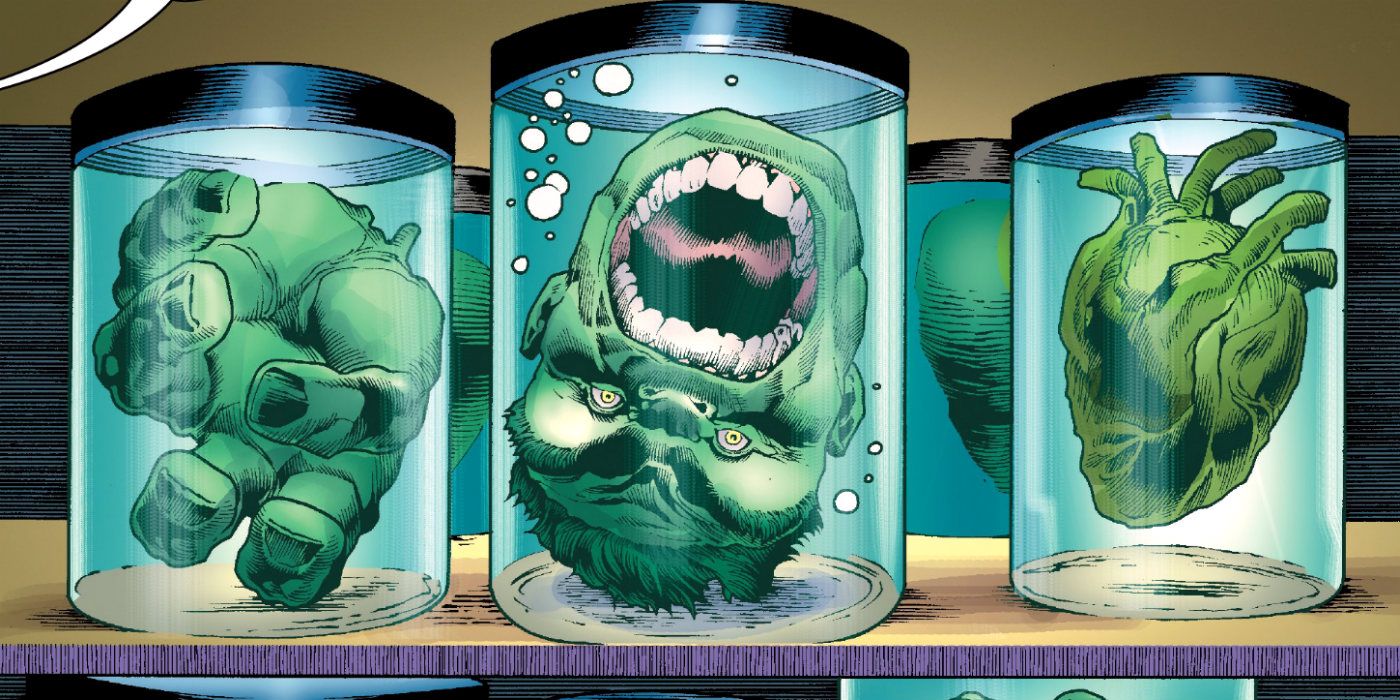 |
| Art by Alex Ross |
"I am suggesting, Captain...that in its rage, its pain, in the shadow of its Armageddon...Your mortal world may have produced something very close to a god."
...And if a bruised and battered Thor is telling you that, you should be very worried. Marvel's biggest and baddest horror hit returns in The Green Door, the sequel to Al Ewing and Joe Bennett's Immortal Hulk. Second volumes are make-or-break for ongoing comic series - so does this instalment live up to its predecessor and encourage you to stick around, or will it scare most readers away?
At the end of the first book, the Hulk absorbed a dark force into himself that took the shape of Bruce Banner's father. He still believes he's in control, and continues to seek answers surrounding the mysterious 'Green Door', but the emerald giant is becoming increasingly sinister and thus has a price on his big green head.
 |
| Remember that "Hail Hydra" thing from a few years ago? Hulk remembers. |
The Green Door has a more sequential story than the first volume, focusing on driving the plot forward rather than crafting individual episodes. It could be argued that this makes the different chapters less distinct, but each one still has a stand-out moment and excellent writing.
In the first half, we witness a superbly-executed battle with the Avengers. It'd be easy to make this a mindless tussle to pad out the book, but each panel is well-thought-out and hits hard. Bennett's renditions of Earth's Mightiest Heroes demonstrate how they're a different breed of hero to the Hulk without making them feel out of place in what is clearly a horror comic.
 |
| Each volume comes with a body part to assemble your own real-life Hulk!* |
Later on, Ewing and Bennett really amp up the body horror with some shockingly grotesque panels and splash-pages. A particular scene in the book's finale will make you flip it over and scratch your head at how it only got a 'T+' rating - this is not a comic for the squeamish.
The Green Door is nightmare fuel, but it's also food for thought. Ewing has filled the Hulk's story with commentary on psychology and nuclear warfare, and there's a running theme of reflections throughout. It certainly warrants a re-read as you consider the what the underlying messages mean and piece together the supernatural mystery as it unfolds.
 |
| This volume features guest artists Lee Garbett (above) and Martin Simmonds |
Despite being the book's namesake and cover image, readers still won't get very many answers on what exactly the Green Door is. We get an idea from the chilling cliffhanger ending, but it appears as if the next volume will be the one to shed some light on the Marvel Universe's darkest secret. Regardless, this is a twisted tale that any horror fan needs to be apart of, so make sure you grab these first two volumes and be there when Hulk in Hell drops this spring.
Rating: 8/10
Both volumes of The Immortal Hulk are available now in all good book stores, with the third one being released in May. Buy them all, but be careful - they might be radioactive.
*You can't really assemble your own Hulk. That would be dangerous.

Comments
Post a Comment